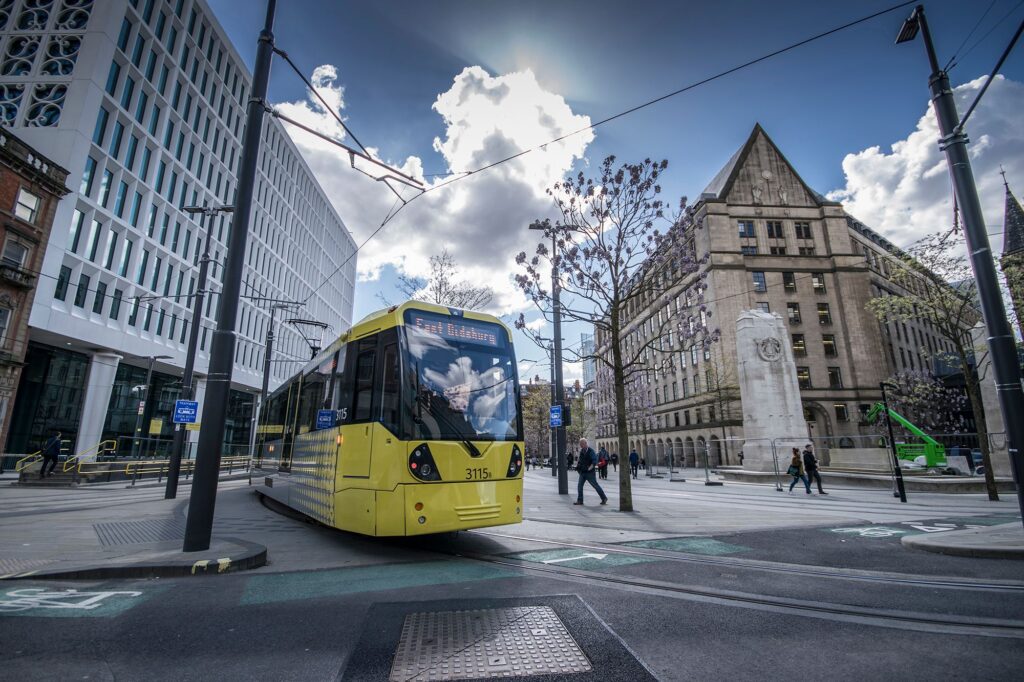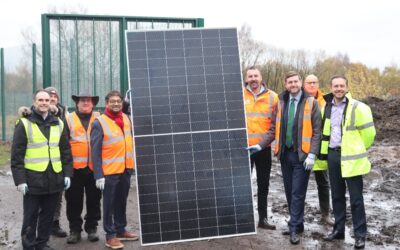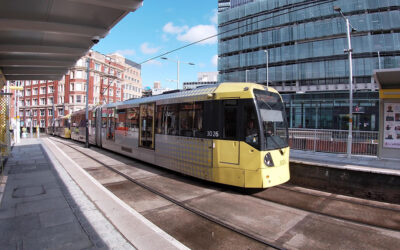
Image supplied by TfGM.
Greater Manchester is home to the largest, emissions-free light rail system in the UK – so what makes it so good for the planet?
Transport for Greater Manchester’s (TfGM) Metrolink network achieves a remarkably low emissions level thanks to its use of 100% renewable electricity.
The famous yellow Metrolink trams that can be seen across Greater Manchester are instantly recognisable in the city-region.
And what makes them extra special is that 70% of their power comes from carbon free sources like wind and solar, with the rest of the energy coming from environmentally-friendly sources like recycling waste – including the power at its tram stops.
The trams are super-efficient, with energy generated in braking going back into the system to power other trams.
The steel wheels that allow the tram to glide along are also fully recyclable and will be reused when they’re finally worn out.
Danny Vaughan, TfGM’s head of Metrolink, said: “Metrolink is a critical part of GM’s Bee Network vision which aims to deliver a London-style, integrated transport network in GM and make the region carbon neutral by 2038.
“We expect to see more people switching to Metrolink from cars as new routes bring trams to more areas. The more people that use the trams, the more the overall emissions figure will come down because the system is operating more efficiently.
“And as more people use the trams instead of environmentally-unfriendly alternatives, the overall pollution levels in Greater Manchester will come down too.”
The Metrolink has seen significant expansion between 2010 and 2020, with a £2bn programme that brought new lines to dozens of local communities, with extensions to Rochdale via Oldham, Ashton-under-Lyne, East Didsbury, Manchester Airport and Trafford Park – bringing significant environmental, social and economic benefits.
The entire Metrolink network is now made up of 99 stops, making it the most extensive light rail system in the UK, with around 45.6 m passengers using the system in 2019.
New lines added have removed 38.8 million car kilometres per year from our roads, contributing towards Greater Manchester’s goal of 50% of all journeys being made by public transport and active travel by 2040.
A major uplift in usage is possible when moving from a largely neglected and low-level rail service to a high-quality rapid transit system. In 2019, over six million trips were estimated to have been made on the Rochdale via Oldham line, compared to one million trips before its conversion in 2011.
Improved public transport is part of Greater Manchester’s plan to achieve Net Zero by 2038 – 12 years ahead of the UK Government target.



